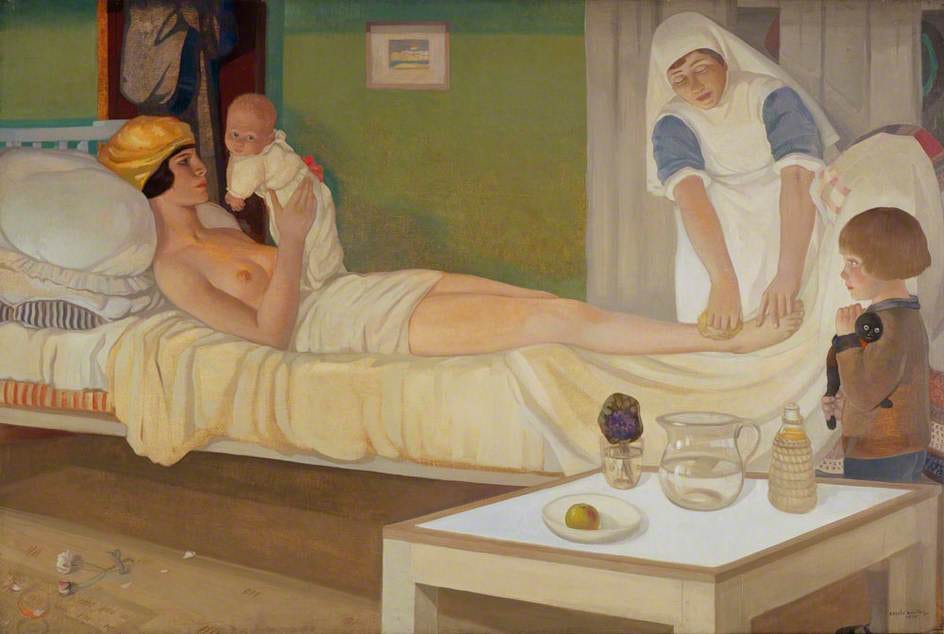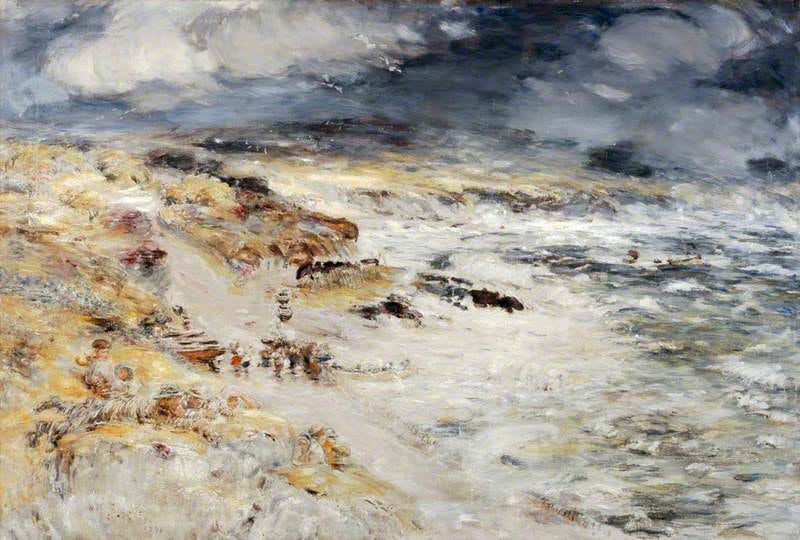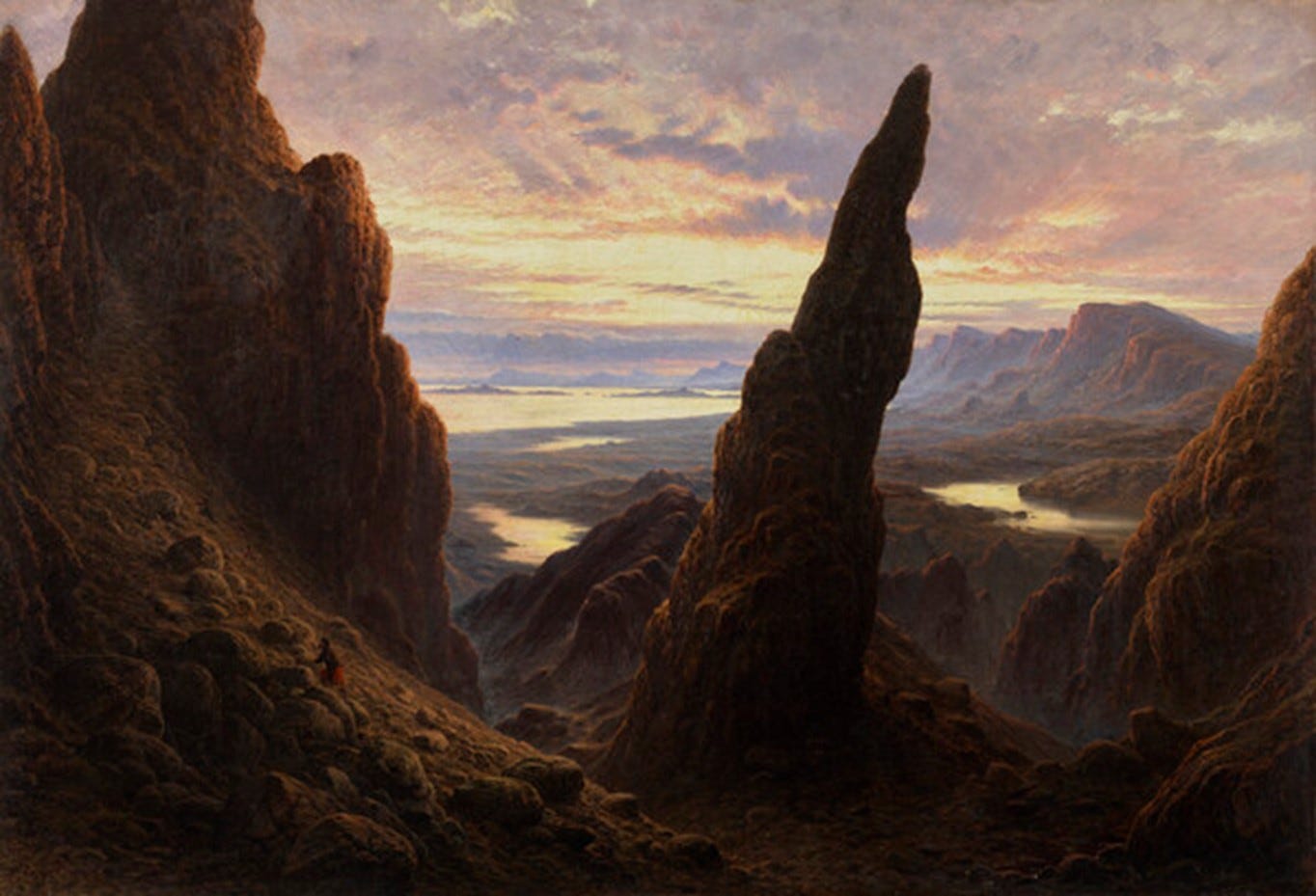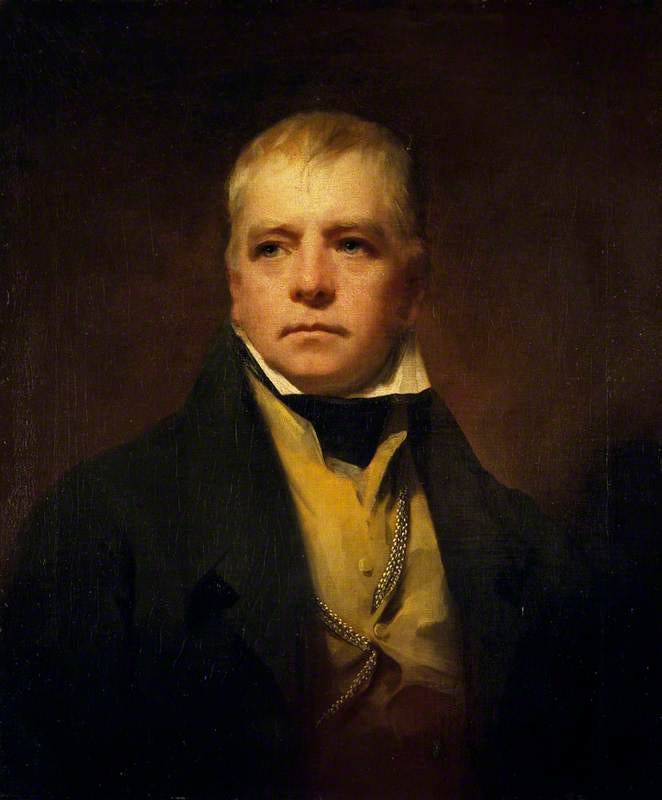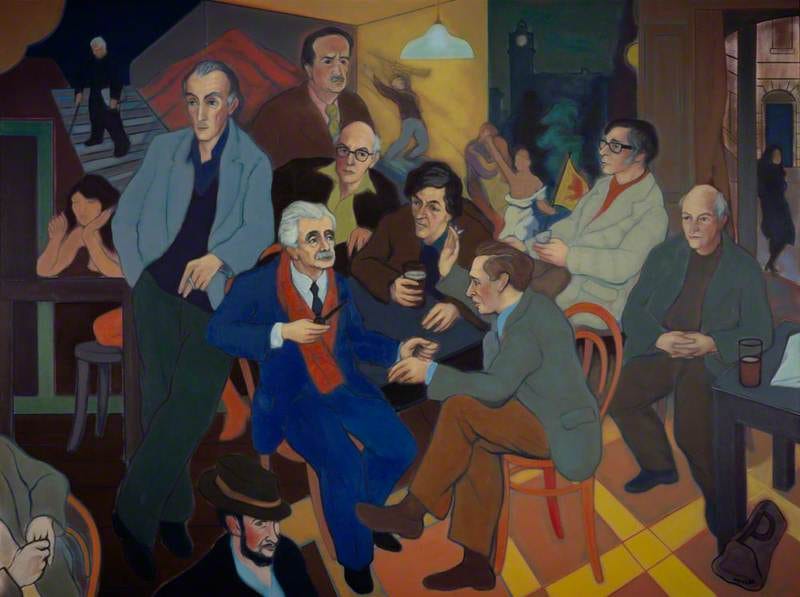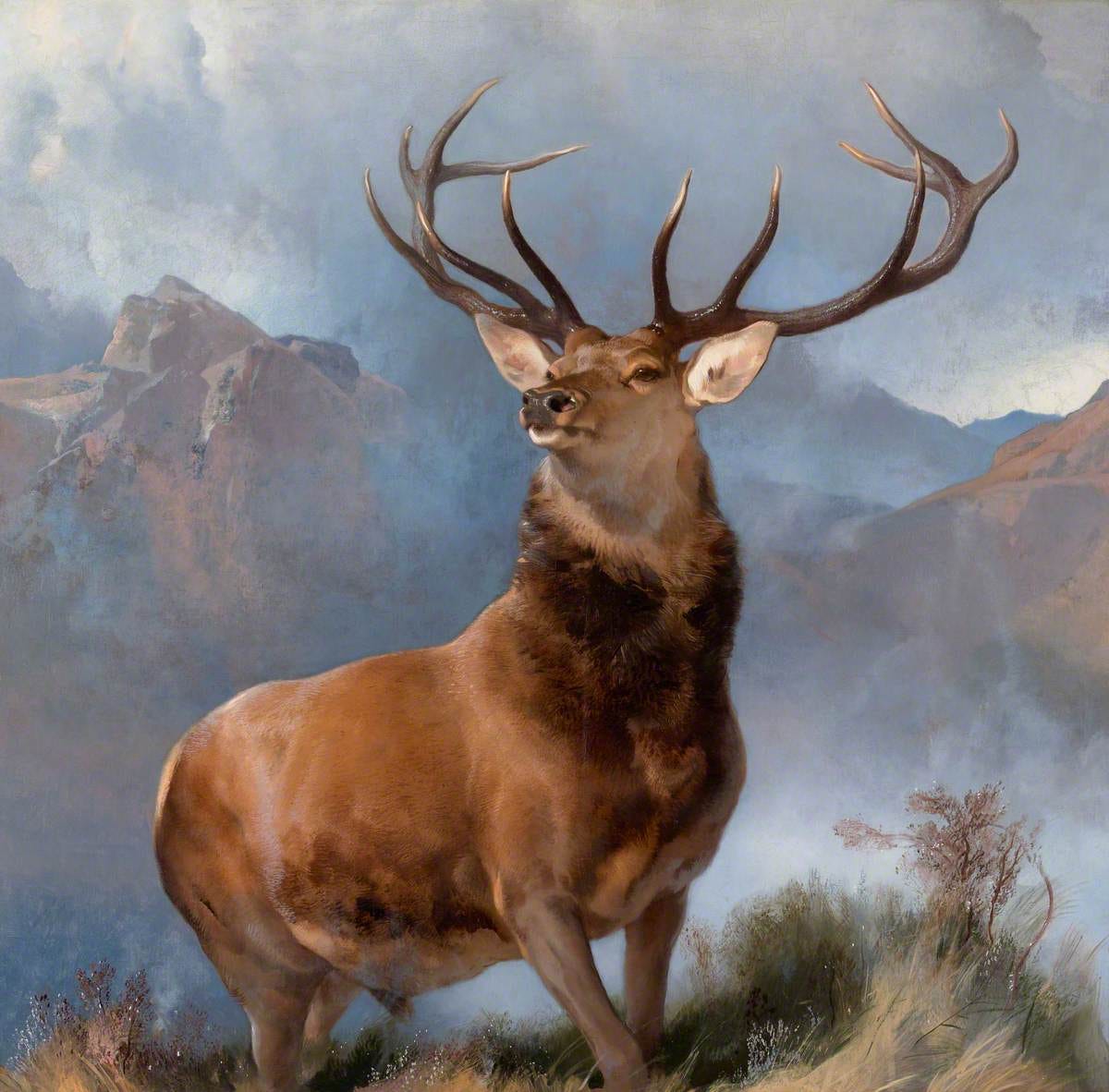The best of us - but what are we missing?
Struan Watson is a new guest writer. He takes us on a stroll through the Scottish Galleries in Edinburgh - and asks important questions about presenting Scotland's history and culture.
Scotland’s iconic images seem settled in the mind of the world; an almost static, often romantic visual representation derived from our classic artworks. Fair enough, this is largely inevitable. But have we missed opportunities in the new Scottish Galleries? And have we left important details out?
The new Scottish Galleries, part of the National Galleries of Scotland in Edinburgh, opened in September 2023.
Coming in at an eye-watering £38.6 million on completion, and around £15m funded by the Scottish Government, the new galleries, now named the National, are a representative showcase of Scottish art from the 19th and 20th centuries.
A national gallery is ‘national’ on two fronts. First, it is the primary space that displays Scotland’s visual culture embraced by its people across history, and a space of pride and familiarity to those who live here.
Second, the National promotes Scottish art on behalf of all its people and is the main stage from which Scotland projects itself to the world.
Countless tourists and visitors - any with an affinity to Scotland by blood, land, or otherwise – will pass through Edinburgh and its galleries. They will see its Castle from above when flying into the airport and, from the National’s entrance, will see it from below.
There is a constant downward movement – the state of being ‘below’ - which I feel going into and through the Scottish Galleries. From Princes Street, I feel myself below the Old Town and the Castle, and to get to the galleries I head down a large outdoor staircase to its glass entrance.
Burrowing into the city
Built into The Mound like a bunker, there are iterations of burrowing myself into the city. Below the Castle, below the street, below The Mound, I find myself at an entrance. This experience is not new to the refurbished galleries. What is new are the Scottish Galleries which are to the left of the entrance, with the gift shop and café to the right.
At last, I rise a flight of stairs to reach the first space of the new Scottish Galleries. I’m greeted by a large digital screen which shows a red stag – the red stag by Sir Edwin Landseer – animated and ventriloquised, its jaw flapping and head bobbing. Not the best start.
Modernism in Scotland
Dismissing this, the first room introduces the visitor to Modernism in Scotland from the 1920s and 30s.
On display here are works by Anne Redpath, William Johnstone, and William McCance. Most notable is Cecile Walton’s self-portrait, Romance, from 1920.
This stunning work is an interrogation into the nature of Walton as a woman, a mother and an artist.
By placing herself as a subject of the reclining female nude, recalling Edouard Manet’s Olympia (1863) and Titian’s Venus of Urbino (1538), Walton highlights and deconstructs the trope revisited across the centuries.
This work certainly packs a punch, and the room is a firm and assertive statement to visitors that Scottish art in the early 20th century had a very real social and political purpose.
This is a nation whose visual culture could stand shoulder-to-shoulder with its European neighbours by means of international modernism.
The end of this room is the beginning of a final descent. A large sloping ramp leads to the bottom of the galleries.
Accessible, spacious and well-lit, the ramp is the main walkway to traverse the space and is accessed by means of a wide corridor which displays a belter of a work by William McTaggart, The Storm (1890). More on him later.
Synthetic sentimentality
Sharing this corridor is a work by Waller Hugh Paton, Entrance to the Cuiraing, Skye (1873). It can’t be a Scottish gallery without such scenes.
This romantic scene is of the Isle of Skye looking westward with deep browns and reds from a setting sun - yet the artist described this part of Skye as an ‘awful place’.
From the onset, there is a disconnect between the feeling held by the artist and his rendering of the subject. If it was not already obvious on first viewing, this is a work of synthetic sentimentality.
One of the few ways an artwork such as this operates is under the condition that these challenging geographies were once inhabited, and that the subsequent loss of its people had opened the door for artists to render barren and rugged landscapes as deeply emotional with excessive sublimity.
This may appeal to the preconceptions of visitors and tourists to Scotland. However, nostalgia can’t be manufactured; the areas of Skye depicted were not inhabited to begin with.
Our culture vitiated…
The land stretches far, its geology grand, but the artwork remains shallow and vitiated, to borrow a word used by Somhairle MacGill-Eain: “Our culture vitiated by the sentimentality of those who have gone away”.
Three figures are shown kilted and climbing a peak, camouflaged into the landscape, almost as if they shouldn’t really be there.
I stand in front of this landscape and ask myself: Who does this work serve?’. It is a fine and impressive painting, yet it is steeped in contradiction and, if I stand for too long, becomes baffling. Best to move on.
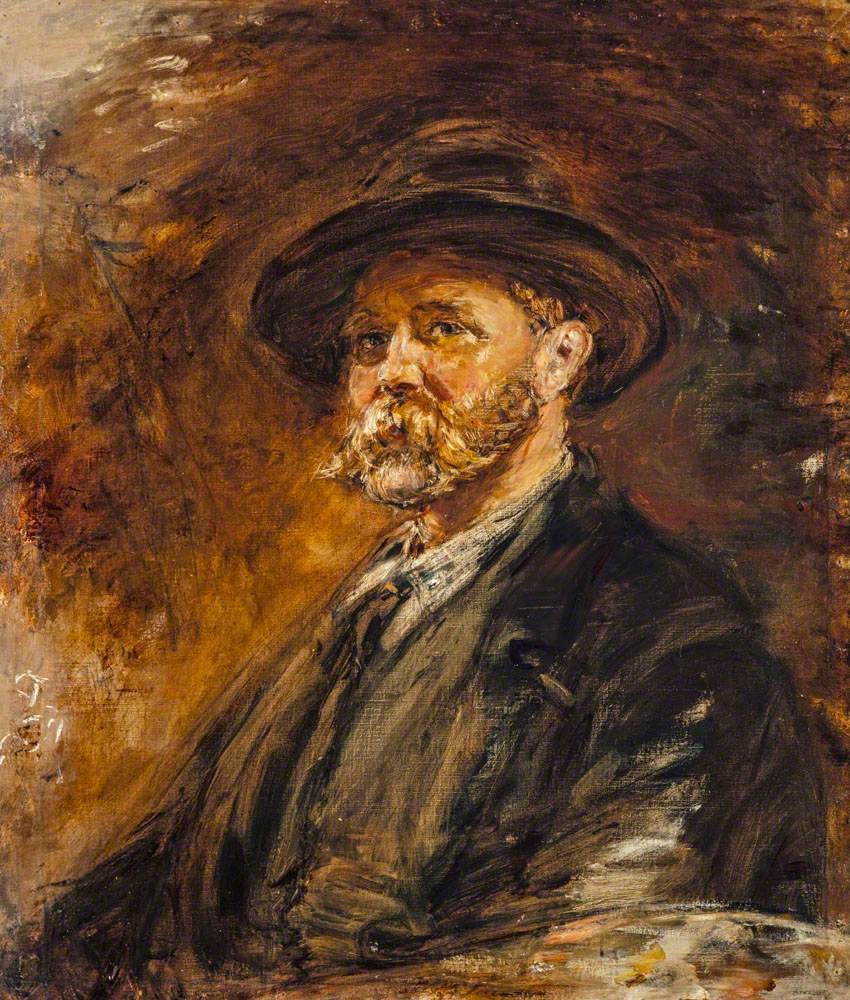
Scenes of Edinburgh from the 19th century precipitate the walls descending into the gallery further. The Castle painted from the east; Princes Street painted from the west. I get the uneasy feeling I’ve entered a CCTV control room: ‘But I’ve just walked from there. I saw it 10 minutes ago’.
With a slight adjustment in elevation, I could recreate the paintings shown on the wall by simply looking out of the gallery’s windows.
Edinburgh parochialism
In a national gallery, I expect to see Glasgow, Aberdeen, Dundee and elsewhere, all with their own unique contributions to Scottish visual culture. Edinburgh and its parochialism are not hidden.
I was given an appetizer of McTaggart at the start of the corridor. However, halfway down the ramp, you can splinter off into an entire room solely dedicated to the Kintyre-born artist. Main course and sides. There are 10 works in total by McTaggart on display here. Any one of them is an exhibition in and of itself.
William McTaggart (1835-1910) was born in Aros, Kintyre, on the west coast of Scotland. His influence and impact on Scottish art and modernism place him as one of the central figures in the development of painting in the 19th century.
Forefront of Scottish painting
Painting en plein air, McTaggart’s visual responses to what he was able to see and feel, particularly in his seascapes from Westport beach in Machrihanish on the west coast of Kintyre, put him at the forefront of painting in Scotland, equally recognised in Europe.
Often labelled as an Impressionist (and his works are certainly worthy of sharing the same wall as the very best of Monet et al), this risks being reductive if used without consideration to the social and emotional factors underpinning his works - the life and loss of the Gàidhealtachd, that is, the Gaelic-speaking communities of the Highlands and Islands, of which McTaggart himself was part.
1400 years of history
The Coming of St Columba (1895) and The Sailing of the Emigrant Ship (1895), rightly shown next to each other, bookend around 1400 years of the history of the Gàidhealtachd.
His nuanced observations into Gaelic life and loss using a style of painting adopted by avant-garde France, mastered on Scotland’s west coast, duly give McTaggart his own room. Additionally, this room shows his early-adopted style borrowed from the Pre-Raphaelites to his later and more refined style seen in a self-portrait from 1892.
From this portrait, associations are made to Rembrandt and Titian who both feature in the pre-1800s galleries above, giving this work - and Cecile Walton’s Romance - wider relevance within the European tradition.
As I mentioned, McTaggart has ten works on display in total. However, there is not one mention of the fact that he himself was a speaker of Gaelic.
There is therefore no indication that he was part of the very culture which endured the loss that he has memorialised. He and the viewer are rendered passive observers.
This greatly dilutes the importance and relevance of his work. To have one artwork by McTaggart and not to mention his Gaelic-speaking heritage raises eyebrows. To have ten artworks and still to not mention it is bordering on insulting.
By the time you’ve written ten information labels, roughly 600-800 words, the chance of bringing up this simple fact tends towards inevitable.
A conscious decision?
One likely conclusion is that it was a conscious decision to omit it. If so, the entire room dedicated to McTaggart becomes another victim to the loss of Gaelic - Sioladh na Gaidhlige.
Thousands of Gaelic-speaking families emigrated willingly or by force in the 19th century from Scottish shores, and these same forces are in play in the 21st century. Ironically, the room itself becomes a McTaggart painting.
As I walk back to the ramp, I can’t decide if I’m leaving willingly or by force.
Down the ramp further I go and this descent sends the visitor back in time. On the right alongside McTaggart, there are other rooms dedicated to the Glasgow Boys and Pheobe Anna Traquair.
Like tributaries and confluences, the flow of every visitor leads back to the main ramp pulling me and everyone else downstream.
I reach the bottom to be met by the iconic images of 19th century Scotland. Sir Henry Raeburn’s portrait of Sir Walter Scott from 1822-23 is enshrined and immortalised, flanked by two sculpture busts of the great writer, flanked further by two wall texts labelled ‘The Wizard of the North’, word-for-word copies of each other.
Notions of identity
While McTaggart was displayed with developments in style and changing subjects, Scott is shown recursively.
Scott’s impact on shaping Scottish identity in the 19th century should not be understated, yet his appearance would benefit from artworks across history which interrogate the fixed and changing notions of this identity, rather than placing this work chronologically and repetitively.
The focus on Scott and not on Raeburn is indicative and ironic, considering the focus was on Modernist painters and not on Hugh MacDiarmid. Then again, I didn’t pass a monument dedicated to MacDiarmid to get here, nor is there an altarpiece with a portrait of MacDiarmid in the National.
After this visit, a journey to see Alexander Moffat’s Poets’ Pub from 1980 at the Scottish National Portrait Gallery is necessary.
The opportunity to redisplay and reinterpret 19th century Scottish visual culture in a radical and new way was certainly there to be taken. I hope there was at least some temptation to commit.
Not fire, but ice
When Virgil led Dante to the bottom and final layer of Hell, he wasn’t met with a raging inferno or cataclysmic fire. Instead, it was glacial and in permanent ice. This katabasis, or a great descent, is the sensation felt.
I am met with Sir Edwin Landseer’s Monarch of the Glen from 1851 shown at the very end of the room. This is the postcard, biscuit-tin, fridge-magnet image of Scotland, its people, its history, and its landscape.
It will forever adorn the walls of our national institution. I could talk about empire, diaspora, and the iniquities of landownership, but the stag looks down on me with such indifference.
This stag, just like the Gàidhealtachd, didn’t know such words - a passage taken from Somhairle MacGill-Eain; I owe him another debt.
Fixed notions of culture
Am I equating my experience of the National to a journey through hell? Not at all. But the process descending deeper and deeper feels like I’m moving ever closer to the fixed and unmoving notions of our visual culture.
Set in ice, perpetual, and never to change. I can’t be too dismissive. A painting by Raeburn or Landseer is still of the highest quality and no matter how I feel, I am rooted and transfixed.
They are powerful images. For this reason alone, they are more than worth their place on these walls.
I can take the stairs or elevator up to the Old Masters and take myself further back in time to the great Dutch, Spanish, French, and Italian artworks that have found a home here in Scotland. Likewise, I can go against the current and head back up the ramp. I often take this route.
As I leave, that animated stag on the large screen goads me one last time.
History and context
In all, it’s an impressive display with the very best Scottish art held within our national collection.
It is well-lit and presented beautifully. But why not more commitment to context, to the history of Scotland and the artists represented here? Why are works frozen in time, without acknowledging the life forces that shaped them, and which continue to shape Scotland today?
Thinking about it now, the Scottish Galleries make me feel stimulated, frustrated, empowered and exhausted.
It makes me feel Scottish.
With thanks to my museum colleagues and to Murdo Macdonald for their invaluable insight and discussions which have nurtured and developed the points I have presented in this review - Struan Watson.
Struan Watson is Assistant Curator of Art at the University of St Andrews. Struan’s work is primarily focused on the pluralism of Scottish art and artists, exploring the wider views of Scottish art, heritage and scopes for change. With published research in this area, he is actively developing the Scottish art collection held at the University of St Andrews, culminating in the curation of an exhibition celebrating 30 years of collecting modern and contemporary Scottish art to open late 2025.



